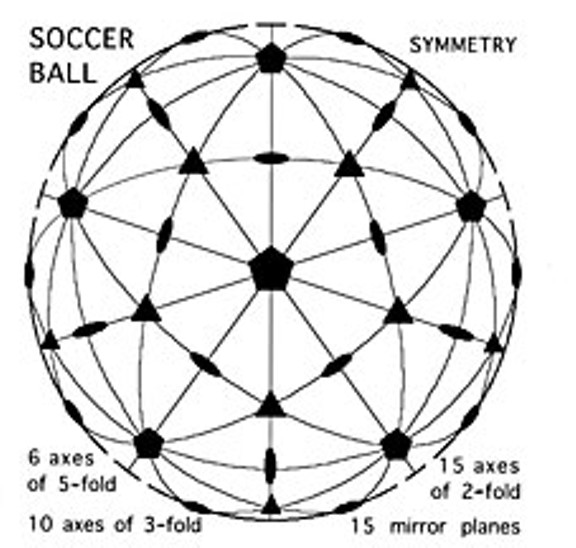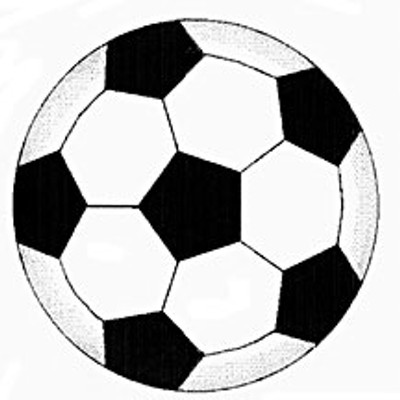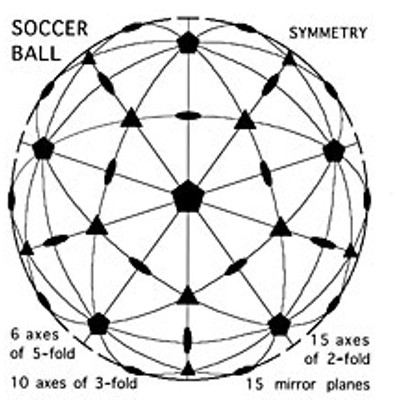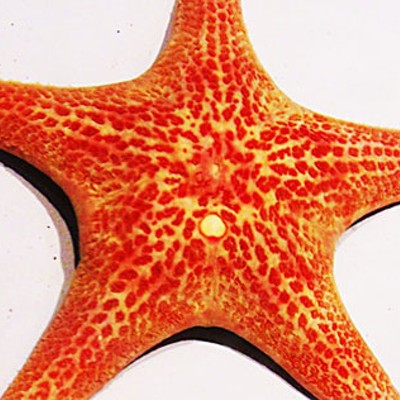[
{
"name": "Top Stories Video Pair",
"insertPoint": "7",
"component": "17087298",
"parentWrapperClass": "fdn-ads-inline-content-block",
"requiredCountToDisplay": "1"
}
]
Crystal faces reveal symmetries which reflect the geometric arrangements of their constituent atoms. All inorganic solids are crystalline, except glass. The concepts of symmetry are essential also to the understanding of life's architecture.
Your right hand has no symmetry. Two hands in prayer are related by a mirror symmetry (biology's bilateral symmetry). Rotate one of those hands 180 degrees, palms together, and you have created a center of symmetry. A cube has a center, three axes of fourfold rotational symmetry, four axes of threefold, six axes of twofold, and nine mirror planes. The big diagram shows the symmetry of a soccer ball and the famous 60-carbon hollow "buckyball" molecule. The envelopes (capsids) of most kinds of virus resemble this same icosahedral symmetry. Such viruses use multiples of 60 protein molecules in constructing their capsids, which enclose infective genomes.
The most common symmetry among macroscopic animals is bilateral. Clams and tuna are bilateral, but snails and flounders have abandoned their ancestral symmetry. A few of your internal organs depart from the beautiful bilateral symmetry of your skeleton and muscles. The liver is almost always on the right.
The starfish appears to have fivefold radial symmetry with five mirror planes, but its off-center "madrepore" betrays its true bilateral symmetry. That spot provides filtered water to its plumbing system and hundreds of hydraulic tube-feet. Sand dollars and sea urchins are likewise bilateral echinoderms. Each urchin spine is a single crystal of calcite as revealed by its cleavage planes.
Anemones and jellyfish usually have radial symmetry.
Some comb-jellies sport two mirror planes (which generate one twofold axis).
Observe and ponder the symmetries of nature, and be amazed that any symmetry can be constructed from a right-handed DNA blueprint.
more from the author
-
Nuclear Matters
- May 6, 2010
-
Sophie Smells a Shaker
- Feb 4, 2010
-
The Roots of Love
- Feb 5, 2009
- More »



































